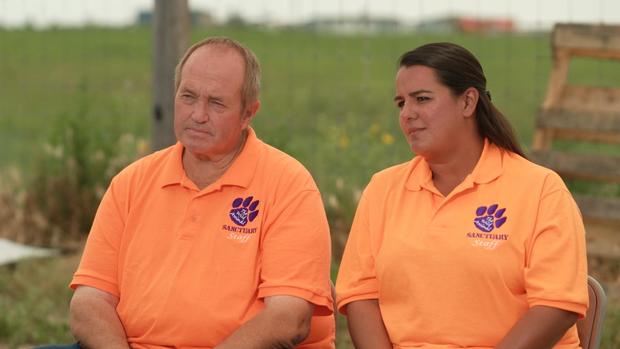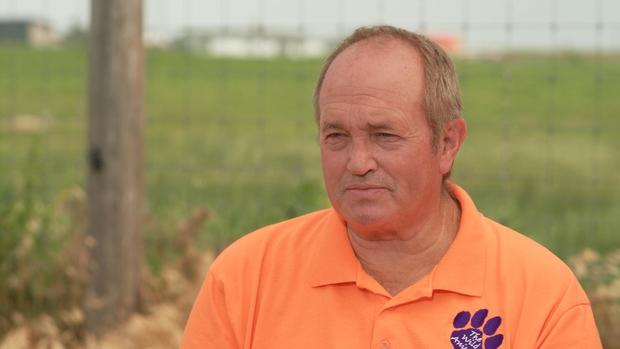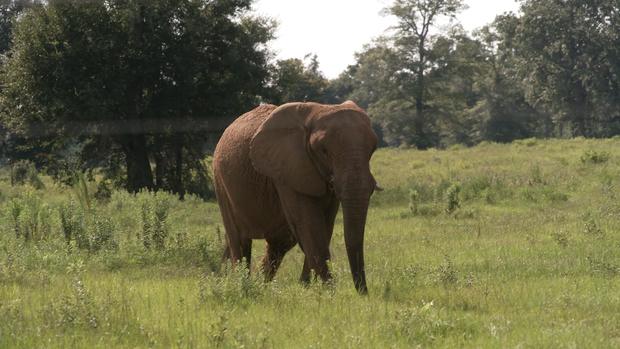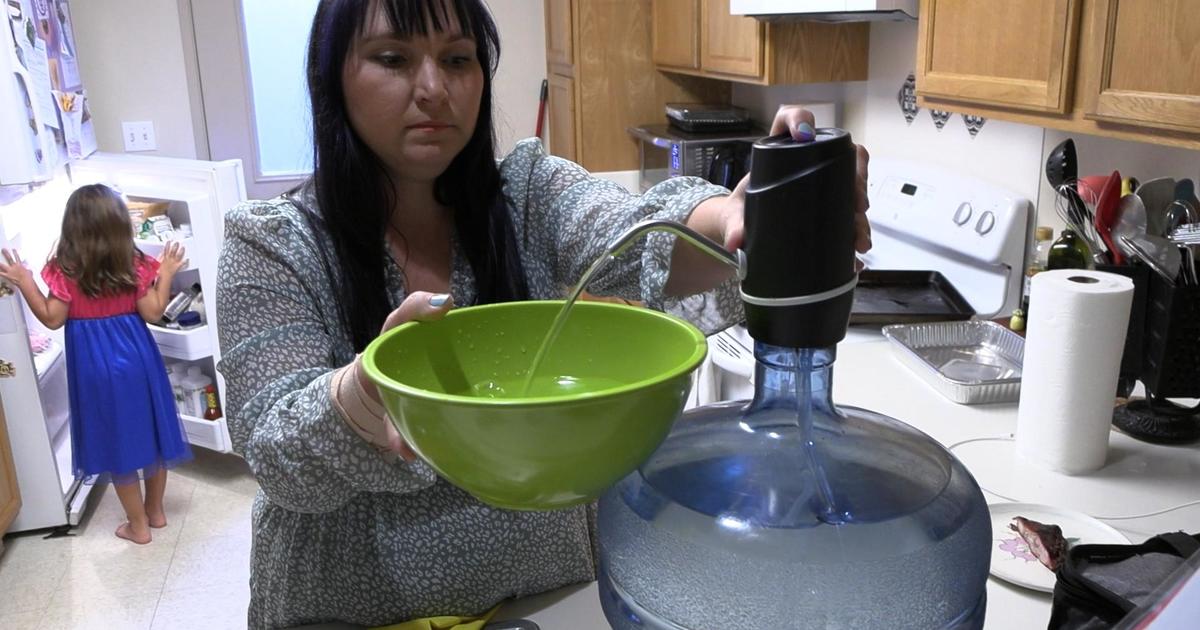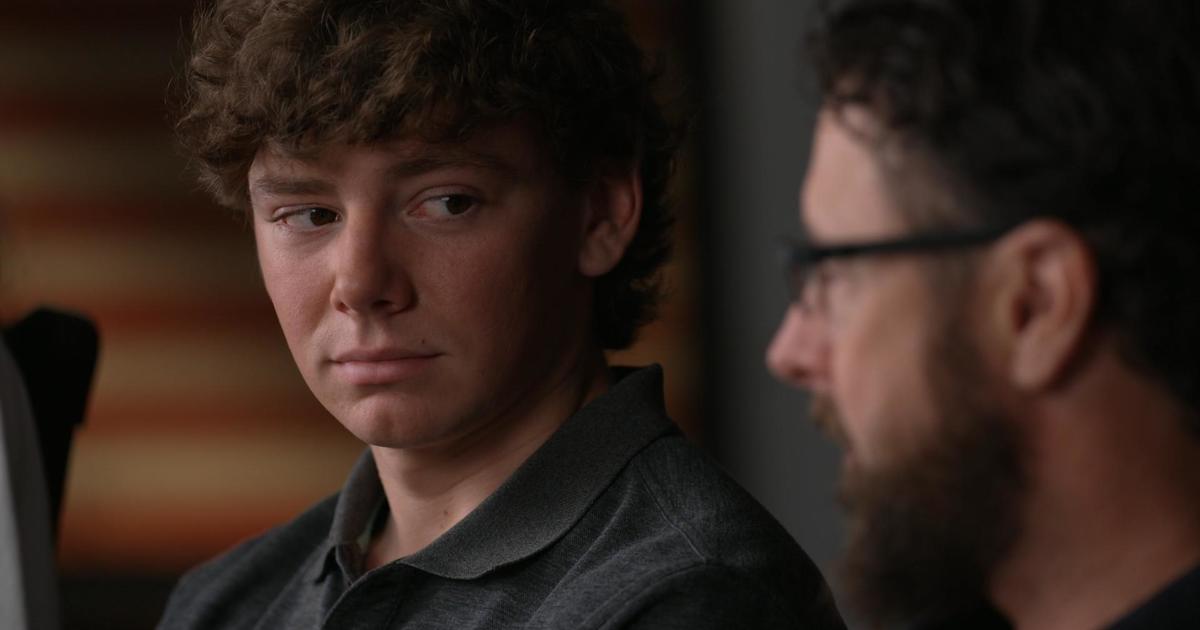Sanctuary founder rehabilitates animals removed from Puerto Rico zoo closed after years of complaints
And, lo, before the flood, the Lord said to Noah, "make yourself an ark… bring out every kind of living creature." That was the Old Testament. But what happens today when disaster threatens animals? A powerful force—a zoo, a foreign government, even the U.S. Department of Justice—often calls from on high and enlists the services of one man: Pat Craig, founder of The Wild Animal Sanctuary in Colorado… who's emerged as the go-to guy for orchestrating high-stakes rescues around the world. Last spring, we accompanied this modern-day Noah to a zoo in Puerto Rico, for his most ambitious mission yet.
These lions were once—literally—the pride of Puerto Rico. Housed at the Dr. Juan A. Rivero Zoo in the coastal town of Mayaguez, the only zoo on the island. But after years of decline, mismanagement and neglect… this was the tableau that greeted Pat Craig and his wife Monica when they arrived here from Colorado.
Jon Wertheim: What was your impression when you got to the zoo for the first time?
Monica Craig: The animals were very, very sad-looking and, some of them were very, very sick. I felt physically and emotionally overwhelmed.
Pat Craig: And even while we were there, animals died almost on a weekly basis.
Monica Craig: Correct.
Pat Craig: So that felt even worse, because we're present, and yet we were there too late.
Over the course of a decade, the U.S. Department of Agriculture cited the zoo two dozen times for substandard conditions and animal mistreatment.
After hurricanes Irma and Maria ravaged the island, the zoo closed to the public in 2018. For the more than 300 winged…scaled…and four-legged residents still captive, the situation turned from bad, to downright desperate.
Monica Craig: We saw a zebra that had a horrible wound on her leg and her tail and she couldn't stand up. We saw a pig that had a skin condition, her skin was just falling apart.
A mountain lion's untreated cancer had been allowed to spread all over its body.
Monica Craig: Seeing the mountain lion suffering the way that he was, that broke my heart. And not being able to-- sorry (crying).
Pat Craig: Yeah, help him. Yeah. It was just so evident that this facility was way beyond repair.
The U.S. Department of Justice—which enforces federal animal welfare laws in the states and Puerto Rico—agreed… and in February, staged an extraordinary intervention, sending a battalion of agents to the zoo…to evacuate every single species to permanent homes on the mainland.
To lead this mission—to captain this ark, as it were—the DOJ tapped Wild Animal Sanctuary founder Pat Craig.
We were there in April to witness the operation: equal parts military-style logistics and battlefield extraction. Among the targets: seven lions sweltering in a concrete bunker.
Pat Craig: And they never hooked up the power after the hurricane. They never hooked up the power to the zoo.
Monica Craig: Never.
Jon Wertheim: Wait, wait, wait, there's a zoo that's functioning with animals therE, and there's no power?
Monica Craig: No electricity.
Pat Craig: No power. And then if you look at the pictures from the inside of their building, you know, it's old steel bars just like jail cells, all in a row.
When it came time to coax the cats out of their cages, Craig entered the lion's den.
Jon Wertheim: I gather the lions weren't necessarily happy to see you and go with you. What happened?
Pat Craig: They're definitely defensive, because they don't know who we are, and what we're doing and why. And so, we show up and we're like, "Believe me, you've got to trust me, we're trying to help you here."
The sweet-talking didn't work, so they deployed plan b: sedation… hard to watch, but accepted practice when rescuing uncooperative carnivores.
Over the course of five months, Craig and his team of 20 used patience…prodding… pursuit… and…grape jelly… to lure each animal into its custom-built crate. A camel… a kangaroo… a rhinoceros…. these stubborn hippos.
Monica Craig, a native Spanish speaker, had hoped to coordinate with the local staff… but the team from Colorado mostly had to go it alone… she says, the zookeepers in Puerto Rico often refused to help.
Monica Craig: We tried many, many days to communicate with them and trying to tell them, "Hey, we're not bad people, were just trying to do what we're supposed to be doing for these animals and give them a better home."
Jon Wertheim: What was their response to that?
Monica Craig: They were upset. They were like, "No, I don't think-- I don't think that's right. The animals belong here."
It was a sentiment shared by many in the community, and at times resistance curdled into outright sabotage.
The rescue team had nearly wrangled Mundi, once a star attraction, into her transport crate, when suddenly…
Pat Craig: Out of nowhere, this elephant-- just flies up, tears out of there, starts runnin' around.
Jon Wertheim: What do you think happened?
Pat Craig: Well, I think somebody shot her with a BB gun, if you ask me.
Jon Wertheim: And hit her in the rear end?
Pat Craig: Hit her in the rear end, just to make her hate that crate.
Monica Craig: Yeah.
Pat Craig: Now she thinks that crate did something to her.
We reached out to Puerto Rico's Department of Natural and Environmental Resources, which is responsible for the zoo. In a statement, it said the animals were provided with comprehensive care, and denied there was any neglect… blaming problems at the zoo on hurricane damage, limited resources and aging animals.
Once the transport was finally ready: a police escort to the airport. Then the animals were loaded, one by one, onto charter flights bound for new homes Craig had arranged at sanctuaries across the U.S.
How do you ferry to safety an 8,000-pound elephant like Mundi? On a 747 cargo jet of course.
Departure brought a sigh of relief.
Monica Craig: When she took off, I cried because I said, "Thank you God, she's in, it's over, and she's out of here. There's no question about it anymore."
Pat and Monica Craig took as many of the rescues as they could back to their 1,200-acre facility. A vast menagerie roams the grassy enclosures on the high planes of eastern Colorado.
Each of the 700-plus animals here came with a sad backstory… wagging their own tales of woe, as it were. Tigers kept in garages as pets. Lions saved from a zoo in war-torn Ukraine. Bears abused at a Korean medical facility.
Now 64, Craig got the idea for the place as a teenager in the 1970s, when a friend who worked at a zoo gave him a tour behind the scenes.
Pat Craig: There were all these animals, lions, and tigers that were in small cages. And he said, "These will be euthanized." And I thought, "Wow, this is crazy, you know? These are healthy and not-- they're not old. They're not sick."
Craig decided right then and there to open his own sanctuary on his parents' small Colorado farm. With few regulations to guide him, he built the animal enclosures himself and scoured biology books for pointers.
Jon Wertheim: Did you have any experience with lions and tigers?
Pat Craig: No, no, none.
Jon Wertheim: You have a degree in zoology?
Pat Craig: No. I was just starting college back then. It was going to be a business degree. (laugh)
And he quickly learned that lions and tigers are no house cats.
Pat Craig: In the early years, I was in the hospital more times than you could count. It was like, "OK, don't do that again." And, you know, so all those years of making mistakes and not getting killed.
Jon Wertheim: What specifically does a mistake look like?
Pat Craig: Uh, pretty bad. I've had my left arm almost completely torn off. I've had-- bit through the chest and collapsed lungs.
The animals, Craig can handle. But on his missions to hostile environments around the world, it's the people he often needs extra help managing.
Heavily-armed federal marshals accompanied Craig when the Department of Justice dispatched him to retrieve maltreated big cats that had been kept by the notorious Tiger King Joe Exotic—the unlikely Netflix sensation—and his associates. These two are among the 141 animals Craig liberated and brought back here.
Jon Wertheim: What kind of conditions was Joe Exotic keeping these guys in in Oklahoma?
Pat Craig: Well, you know, it was just all these really small cages that were just lion after lion because it was a gigantic breeding operation primarily.
The rescue missions and the sanctuary operate on an annual budget of $34 million, funding comes mostly from private donations.
When animals arrive here, this is often their first stop… designed to minimize shock by mimicking the conditions they came from. Here, they're evaluated and given a treatment plan. Whether it's medication or emergency surgery. Craig and staff veterinarian, Dr. Mikaela Vetters introduced us to Chad and Malawi… both rescued from Puerto Rico.
Jon Wertheim: How confident do we feel about our locks here?
Dr. Mikaela Vetters: Confident.
Jon Wertheim: This guy wants to get out.
Pat Craig: She says, "Yeah."
Jon Wertheim: This guy's ready to hang out with us.
They suffer from permanent neurological damage, likely caused by malnutrition, something Craig could spot just by looking.
Pat Craig: You see how she keeps doing that? She just doesn't have control over it.
Jon Wertheim: Head tilting at an angle.
Pat Craig: Yeah, we've had literally hundreds of lions that have come through that have had that kind of problem.
Jon Wertheim: You've seen this before?
Pat Craig: Oh yeah.
The sanctuary devises a special diet for each animal… which requires 100,000 pounds of food per week— mainly donated by nearby Walmarts… occasional cupcakes included.
When we met him, Mikey the bear, another asylum-seeker from Puerto Rico, was midway through his rehab.
Dr. Mikaela Vetters: Right now he's in his lock-out just so we can medically manage him.
Jon Wertheim: What did you see the first time you saw him?
Dr. Mikaela Vetters: He was in a great deal of pain very gingerly moving. We assume he's got, you know, a great deal of arthritis which we've provided medications for and now he's getting around like-- almost like a young bear.
Nursing animals like Mikey back to physical health is one thing. Ministering to their emotional wounds is often a bigger challenge. Having been raised in captivity, many of the animals arrive with what amounts to severe PTSD, and they must be taught to trust the humans caring for them.
Pat Craig: They're already mad at people anyway because of whatever people had done. I had one tiger years ago that any time you came near he'd want to hit the fence and kill you.
Jon Wertheim: What's the timetable for trying to ease some of the trauma these animals have been through?
Pat Craig: You know, some were beaten, some were starved, some were mentally tormented, to a degree, you know. And so every case is different. So some of them will do it in a matter of days, some will be a few weeks.
Jon Wertheim: Doesn't that story imply however traumatic this may have been, it's not irreversible.
Pat Craig: It's not irreversible.
The goal of all this rehab is to get these wild animals to act the part.
Remember Mundi? At the zoo she had zero contact with other elephants for more than 30 years. We accompanied Craig on a visit to a refuge in Georgia, where he placed Mundi under the care of conservationist Carol Buckley. This marked the first time Craig and the elephant had seen each other since Puerto Rico.
Jon Wertheim: What do you notice?
Pat Craig: Well, first thing she just looks so much healthier. And just her demeanor is so much calmer and nicer. Every day when I would go see her in the zoo, I just, God, I would just hurt. And then now to see this is just amazing. Just truly amazing.
Buckley provides the care and feeding, but happily admits Mundi's real mentors are the other elephants here.
Jon Wertheim: You're just the innkeeper.
Carol Buckley: That's right. Hey, I just open and close doors and make sure the waters are running, you know? And, the other elephant knows what they need to learn. And they're instructing them. It's fantastic. It is exactly the same as what happens in the wild.
That's the same principle Craig employs at his sanctuary, and after two months of rehab, the lions from Puerto Rico were ready to enter their permanent habitat.
We were on hand for the release. No one quite knew what to expect. Not least, the lions.
The first was reticent. But one by one….they started to venture out… enclosed for their safety, and ours… but otherwise, in a vast ocean of green.
Jon Wertheim: These guys have been in captivity their whole lives. This is a first.
Pat Craig: Yeah, this'll be the first time ever that they've been able to either run, or live in a big space like this, even have deep grass.
Jon Wertheim: Makes you feel good?
Pat Craig: Yeah, absolutely. This is why we do this.
There were a few scuffles…but for Pat Craig, that's exactly what he'd hoped for: lions acting like, well, lions. The animals come to this sanctuary from all over the world. But in this unlikely setting—here, silhouetted by the Rockies in eastern Colorado—they find more than just sanctuary… they, finally, find a home.
Produced by David M. Levine. Associate producer, Elizabeth Germino. Edited by Joe Schanzer.
